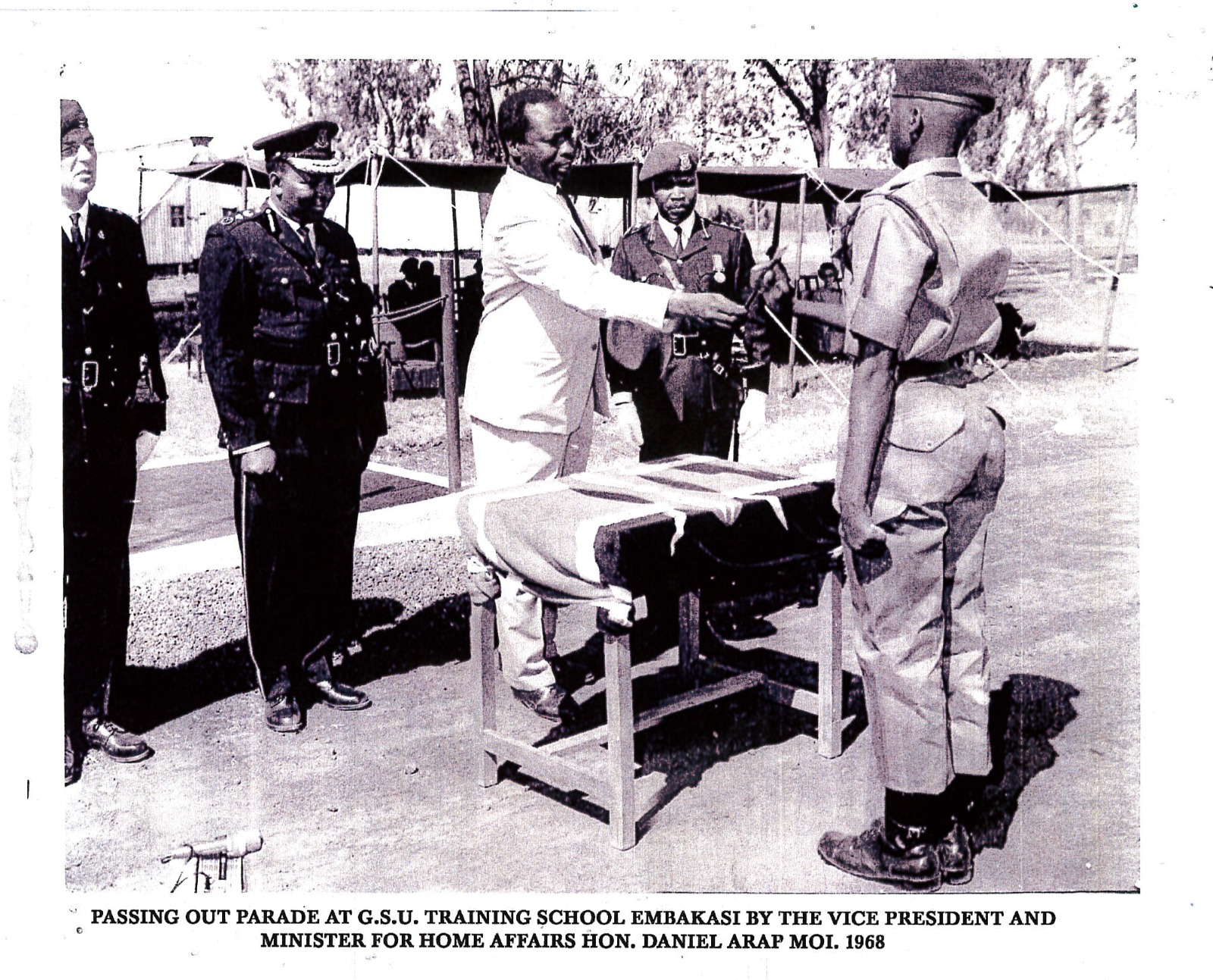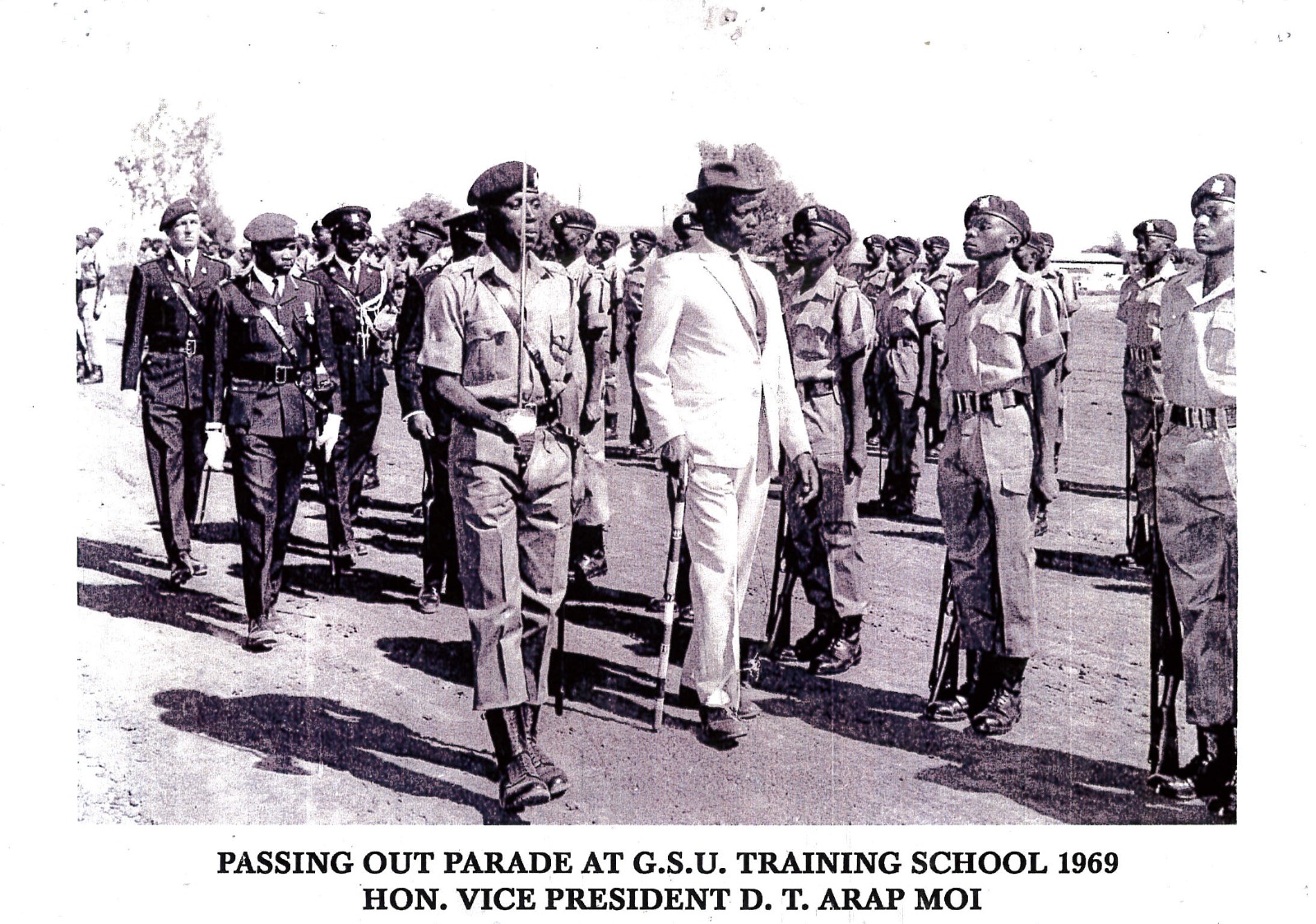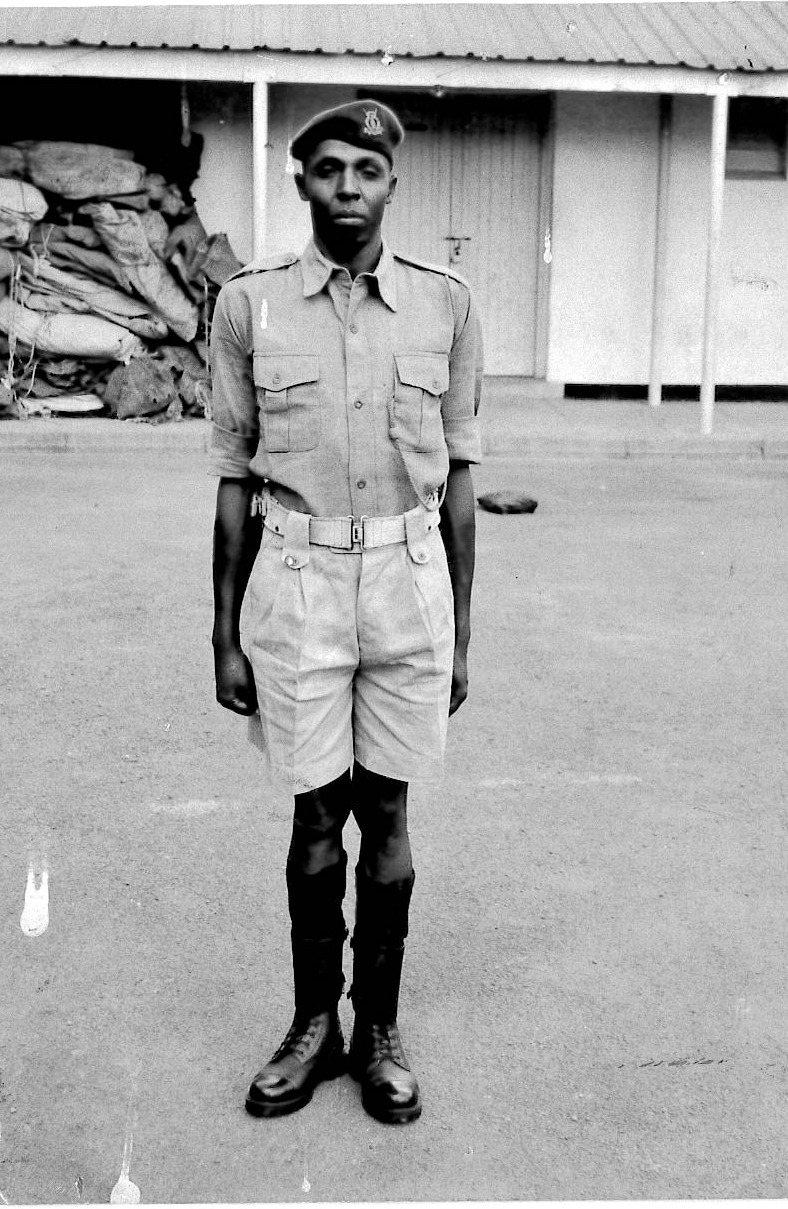- GSU, Ruaraka, Nairobi
- +254 208563733-8
- info@gsu.go.ke
- Staff Emails
Background Information
General Service Unit History.
The General Service Unit came into existence in 1948 when the need for a regular Police reserve or Emergency Company was met by the formation of what was in fact an Armoured Mobile Unit. Its first Commander was Assistant Superintendent Mr. B.A Sheldon (Inter A.C.P). Initially it consisted of about 50 men drawn from Nyanza Province and was equipped with Bren Gun Carriers and Armoured Cars. During the Dini ya Msambwa uprising (1948) in the West SUK District, the Emergency Company proved once and for all the effectiveness of A Police Unit of this nature.
In September 1953, the Emergency Company was redesignated the GENERAL SERVICE UNIT and expanded to an establishment of 47 officers and 1,058 other ranks. The Unit was reorganized into colony Headquarters and five Provincial Companies – Nyeri, Rift Valley, Coast , Nyanza and Nairobi enabling each province to have its own mobile strike force. Companies consisted of Platoons – each with a strength of one Inspector, one Ass. Inspector, and thirty nine other ranks – which were divided into three ten-man sections. Each Platoon was fully mobile and when operating in the field, self supporting. They were supplied with motor transport, wireless, tentage and emergency rations. The armament comprised of Bren –guns, sten-guns, rifles, revolvers and Greener –guns. Transport consisted of 3 Landrovers, Ten Lorries and Pick-ups; one of each was allocatted to every platoon. The organising, equipping, training and deployment began in October 1st 1953 and was completed on December 22nd. On that date, the Unit was re-disposed as follows:-
- HQS/Colony Reserve - 178 Men
- Nyeri Province Company - 12 Platoons
- R.V.P Province Company - 5 Platoons
- Nairobi Area Company - 5 Platoons
In 1957 it was decided to decrease the number of men in the Unit, but at the same time re-organize it into a highly trained elite body of men capable of dealing with any situation affecting internal security within the Country. For the first time, the different Companies were brought under one officer whose designation was “COMMANDANT”. The officer allocated the task of effecting the transformation was Mr. S.G Thompson, Superintendent of Police and it can be said that the Unit as we know it today stems from his accomplishment.
During the next few years, the name G.S.U became synonymous with efficiency. Teams from the Unit completely dominated shooting and Drill Competitions and the GSU became renowned for speed and skill in which they reacted to emergency situations. As part of re-organization, a Training Wing had been established and companies did a 3 month Refresher Training Course in 15 month cycles. It was an unwritten rule that all officers except the Commandant and his deputy, had to be single. The other ranks were transferred to the GSU on a 2 year tour, having completed a 9 months recruit course at the Force Training School. On promotion, Non-commissioned Officers (NCOs) were required to complete a further 3 years.
In 1961, the Unit was for the first time deployed operationally outside Kenya, when ‘A’ and ‘E’ Companies were sent to Zanzibar to quell civil disturbances that had cost over 90 lives. It took the GSU only two days to restore the situation to normalcy and the island became peaceful. From that time on, other territories namely Somalia, Zambia, Uganda and Swaziland sent officers on attachment to the GSU for training. An officer from the GSU was transferred to Zanzibar to form a similar Unit in 1962.
The period between 1961 and Kenya’s independence on 12th December 1963, saw the GSU being deployed chiefly as anti-riot squads to highly populated centres. The Unit played a decisive role in ensuring that peace and tranquillity prevailed during the period of political instability. The experience gained at this time enabled GSU officers to re-write the manual on Riot Drill training and this document is now the official training pamphlet for Riot Drill within the Unit and is generally accepted by other Police Services as the best of its kind.

The Period between 1963-1967 saw the GSU deployed on active service in the Eastern and North Eastern Provinces where secessionist movement had resorted to guerrilla tactics in an attempt to force the Government to grant them the right to secede large areas of Kenya to the Republic of Somalia. In this long drawn out campaign, the Unit fought with great distinction. “F”, “G”, “H”, “I”, “J” and “R” Companies were added in order to cover operational teams, the Addis Road project and Anti-Shifta campaign. “I” Company was disbanded and ‘G’ Company transferred to the Presidential Escort Section. Recce Company became a highly specialized group and the rest reverted to routine duties. Headquarters Company was added to cover the guarding of the President, the President’s residence and State House.
In 1963, Africanisation of G.S.U took place with three local officers being posted from General Duties. By 1967 all Company and platoon commanders were Kenyans and in September the same year, Mr. Ben H. Gethi, A.C.P. took over command of the Unit to become its first African Commandant.

In 1965, the Unit commenced taking direct entry recruits and in the same year, the G.S.U Training wing was established to run its own Non-commissioned officers (NCO) promotion courses. Men were required to serve a minimum period of six years in the GSU before becoming eligible for a transfer to other branches of the force (via the Kenya Police College for conversion). This change over was widely acclaimed and was effected to increase efficiency and cut out the manpower wastage which was caused by men having to complete one year training ( 9 months at the K.P.C and 3 at the G.S.U Training wing) before being ready for deployment in the field. Soon after, it was also agreed that all Subordinate officers to inspector of police (SOIP) promotion courses would also be run at the G.S.U Training wing.
In 1969 the foundations were laid for a new G.S.U Headquarters followed in 1970 by the building of a new training wing. These new two camps built to the very latest specifications, were the brain child of the commandant who managed to convince the government that the G.S.U needed decent accommodation. By 1973, G.S.U had new Training school at Embakasi (designated in 1972) which could boast of the most modern facilities of its kind in Kenya then.
In 1971, G.S.U had, in the field of sports, become a household name in Kenya. It was now regularly winning the force boxing, athletic and shooting championships, and had reached the finals of football and hockey events. Teams comprising mainly of G.S.U men also won the inter service boxing, shooting and Judo competition and officials and competitors to the Olympic, commonwealth, Africa and regional games were being regularly chosen from within the Unit.
GSU COMMANDANTS SINCE IT’S INCEPTION
The unit has been under the leadership of Commandants as shown in the table below;
|
S/NO |
NAME |
FROM |
TO |
|
|
Mr. S. G. Thompson |
19/5/1961 |
17/7/1961 |
|
|
Mr. S. G. Smith |
27/7/1961 |
20/3/1963 |
|
|
Mr. Mackenzie |
21/3/1963 |
26/2/1964 |
|
|
Mr. R. J. Angel |
27/2/1964 |
17/4/1967 |
|
|
Mr. B. M. Gethi |
18/4/1967 |
1/9/1978 |
|
|
Mr. P. Mbuthia |
2/9/1978 |
24/8/1982 |
|
|
Mr. E. K. Mbijiwe |
25/8/1982 |
8/4/1987 |
|
|
Mr. J. K. A. Kosgei |
8/4/1987 |
9/3/1993 |
|
|
Mr. C. C. Kimurgor |
10/4/1993 |
29/6/1999 |
|
|
Mr. S. K. Cheramboss |
29/6/1999 |
30/8/2002 |
|
|
Mr. D. M. Kimaiyo |
1/9/2002 |
15/1/2003 |
|
|
Mr. Lawrence Mwadime |
16/1/2003 |
2/6/2005 |
|
|
Mr. Mathew Iteere |
2/6/2005 |
8/9/2009 |
|
|
Mr. William Saiya Aswenje |
23/9/2009 |
20/3/2014 |
|
|
Mr. Joel Kitili Mboya |
20/3/2014 |
2/9/2015 |
|
|
Mr. Stephen Chelimo |
5/9/2015 |
7/7/2018 |
|
|
Mr. Douglas K. Kanja |
8/7/2018 |
17/4/2023 |
|
|
Mr. Eliud K. Lagat |
17/4/2023 | 12/7/2024 |
| 19. |
Mr. Ranson Lolmodooni |
12/7/2024 | - To Date |

